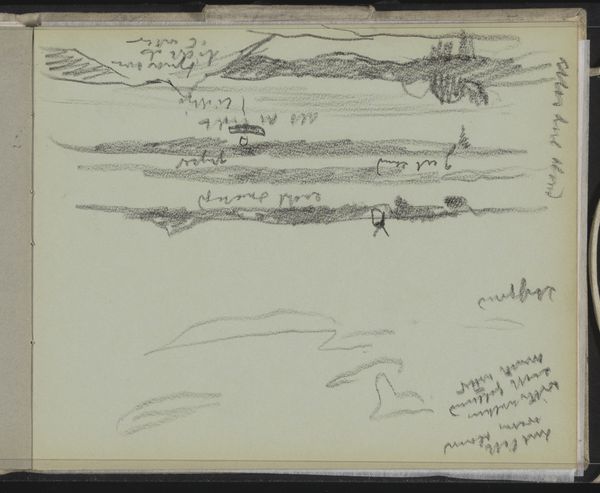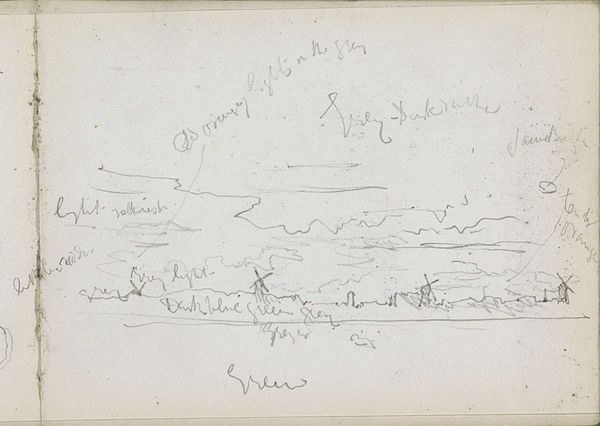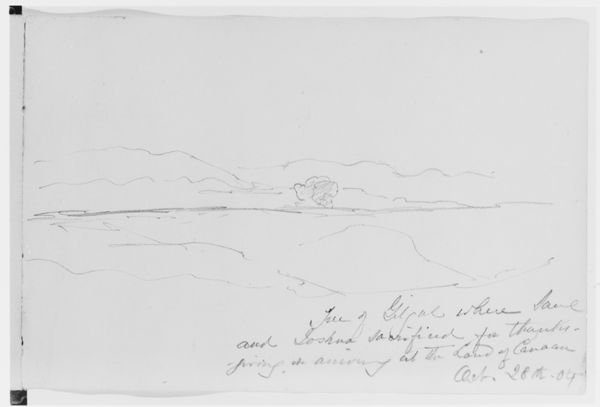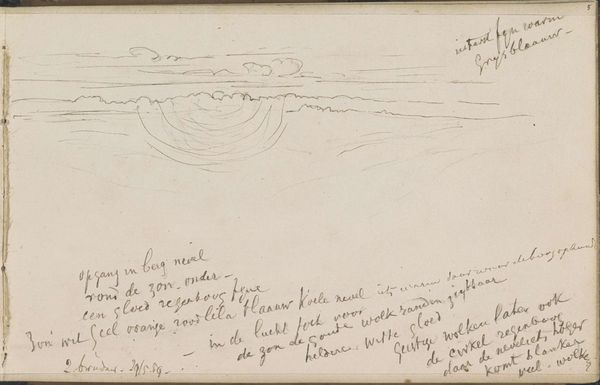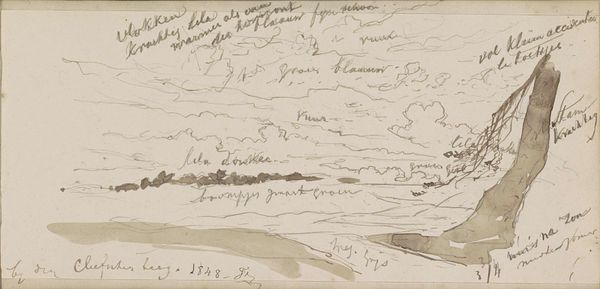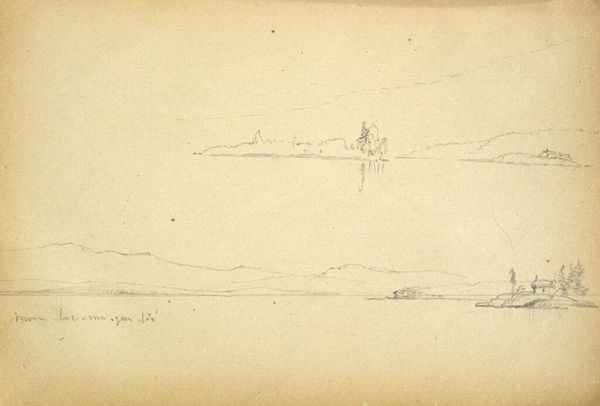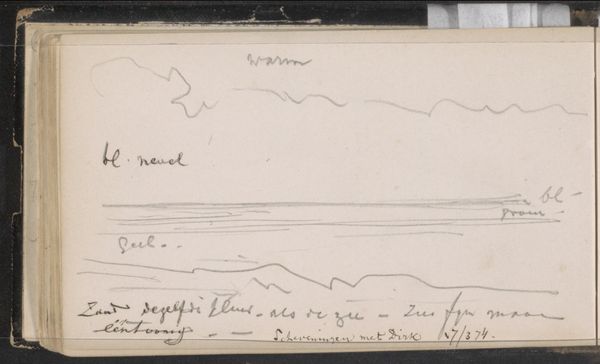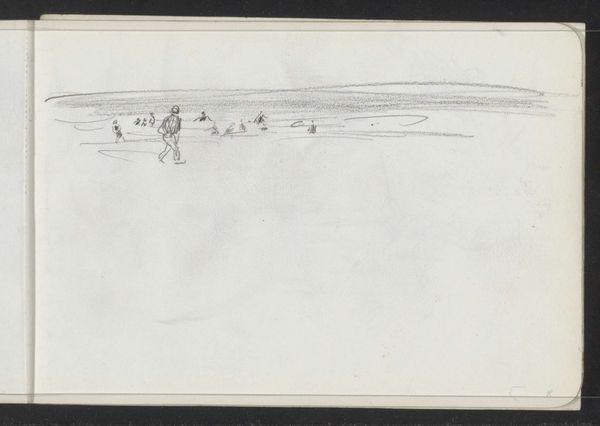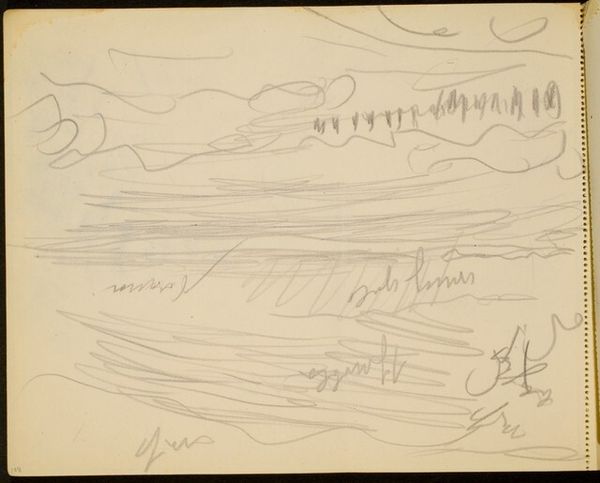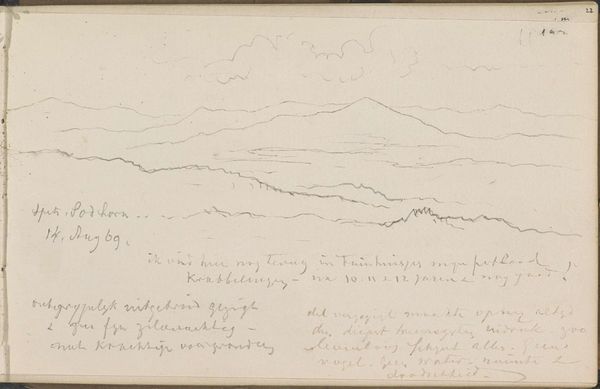
drawing, plein-air, paper, pencil
#
drawing
#
impressionism
#
plein-air
#
landscape
#
paper
#
pencil
#
watercolor
Copyright: Rijks Museum: Open Domain
Here is Johannes Tavenraat’s quick sketch, Polder bij de Rotte, made in 1876. Tavenraat belonged to a generation of Dutch artists who, in the wake of Romanticism, sought to capture the natural beauty of the Netherlands with a new and sincere eye. The polders, lands reclaimed from the sea, have always been central to Dutch identity, embodying a spirit of innovation but also struggle. Tavenraat has quickly captured the vast, open landscape, with its distinctive waterways and cloud formations. The horizon line sits low, giving prominence to the sky, a subtle nod to the vastness of nature. But this landscape also speaks to a human story. It reflects the labor, ingenuity, and collective effort required to maintain these low-lying lands. In its own way, this drawing becomes a meditation on identity and place, subtly reminding us of the intimate connection between the Dutch people and their carefully cultivated homeland.
Comments
No comments
Be the first to comment and join the conversation on the ultimate creative platform.
